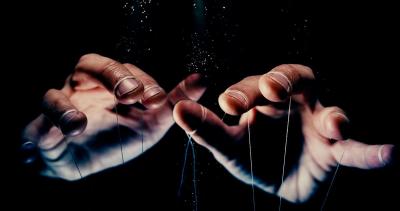Last month, our blog provided an introduction to deepfakes, a technique in which artificial intelligence-based technology is used to alter or produce video content, tricking viewers into believing that something happened when it actually did not.
This month, we follow up with more on this important subject, including resources and programming ideas for all ages.

Elementary school (grades K-5)
It may seem like our youngest learners should not have to worry about what they read, see or experience on the web, but to think that way would be doing a disservice to both our students and their guardians. Understanding that everything on the internet is not necessarily true is the cornerstone of good media literacy.
Programming can include stepping stones into encouraging students to be critical thinkers and consumers of information. This can include encouraging students to learn to do research using reliable resources including school-purchased databases and kid-friendly sites. This Youngzine article would be a great addition to introducing the topic to elementary students.
Another great idea is to start with pictures by using this lesson from Common Sense Media “Picture Perfect.” In this lesson, students are engaged in learning why people create fake images on the computer. This is a perfect lead into how images can become videos that are falsified.
Middle school (grades 6, 7, 8)
One great programming idea that we have heard and are excited to employ is the idea of incorporating media literacy into the school morning announcements. This could take several forms depending on your building and your needs.
Once a week, preferably on a Monday, challenge students to decide if a headline, news blurb or photograph is accurate and true. Have a dropbox in the library where students can place their answers. On the Friday, or during end-of-the-week announcements, announce a random winner from the correctly answered entries. It’s a great way to get students thinking about media and headlines and requires you to just provide a topic.
Once students have become familiar with the nuances of headlines and photographs, you can move into showing video clips — teaching the concept of the deepfake along the way.
This great video from Hank and John Green is a great starter to programming about deepfakes for middle school students. It’s fast paced, accurate and humorous at times — all things that will appeal to middle school learners.
Continue your programming with some of these great lessons from KQED that address media literacy, combating fake news and thinking and evaluating like a journalist — including some lessons that touch on the deepfake crisis.
High school (grades 9-12)
While attending the American Library Association conference in June, we struck up a conversation with a librarian at a four-year university. One of the topics we really dug into was the need for high school students to understand where and how to find reliable information.
All too often, she was seeing sites and resources cited that were not scholarly or were completely incorrect. In addition, she had noticed an uptick in things being shared on social media that were completely fake or false. Programming that includes learning about deepfakes amd how to recognize deepfakes should be part of great information literacy instruction.
Here are some resources that you can incorporate into your high school programming.
- BookWidgets' "Fact Checking and Fake News Lesson Plans": This site contains numerous lessons on information literacy, including tips for how to check if a video or article might be a deepfake or a piece of misinformation.
- C-SPAN Classroom: C-SPAN has created an entire library of lessons around disinformation in politics, including deepfakes.
- PBS NewsHour: This June 2019 clip from PBS NewsHour digs into deepfakes and how they came about.
- Media Smarts' "Authentication Beyond the Classroom": This lesson plan, out of Canada, teaches students how to fact check viral videos and stories.
- Neinnovation Fake News Lesson Plans: The New England Innovation Network has rounded up a host of lesson plans and activities that address everthing from fighting fake news to fact checking to viral videos.
- "Tracking Down Fake Videos": This report from NPR highlights steps being taken to track down sources of misinformation
- TeachHub's "Teaching Strategies to Detect Fake News": TeachHub has curated lessons to assist you in building programming around fake news and deepfakes.
- University of Wyoming LibGuide, "Media Misinformation, Viral Deception and 'Fake News'": This LibGuide has a plethora of lessons and sites that can be used for programming with high school students, as well as post-secondary school and college-age students.
Professional development for library staff
As librarians, we teach everyone — including library and school staff! Providing programming and ideas and information to your staff is a great way to fight disinformation. Here are a few articles that delve into the deepfake phenomenon.
- CNN: "When Seeing Is No Longer Believing: Inside the Pentagon’s Race against Deepfake Videos"
- The Economist: "The Economist Explains: What is a Deepfake?"
- Forbes: "The Best (and Scariest) Examples of AI-Enabled Deepfakes"
- NPR: "What You Need to Know about Fake Video, Audio and the 2020 Election"
- PBS NewsHour: "How Teens Deal with the Spread of Misinformation"
- Popular Mechanics: "What is a Deepfake?"
KQED offers the Misinformation Course Collection. These FREE courses from KQED education cover a range of topics including the deepfake phenomenon. Courses include untangling accurate information; confirmation bias; how misinformation, propaganda, and deepfakes are made; and bias in big data. Librarians can even earn badges and become certified through KQED.
The reality
The reality is that deepfakes are not going away. In fact, they are only going to become harder to discern from real videos and images.
Providing programming on information literacy that includes teaching students how to spot the fake and become skeptical and savvy consumers of information is more important than ever.
Because this is a growing area of media literacy, there aren't a ton of resources out there for librarians — we’re sure it’s coming. If you are doing something in your library to teach about deepfakes, we would love to hear about it. We’re sure others would as well. Please share in the comments below. After all, we’re all in this together!


